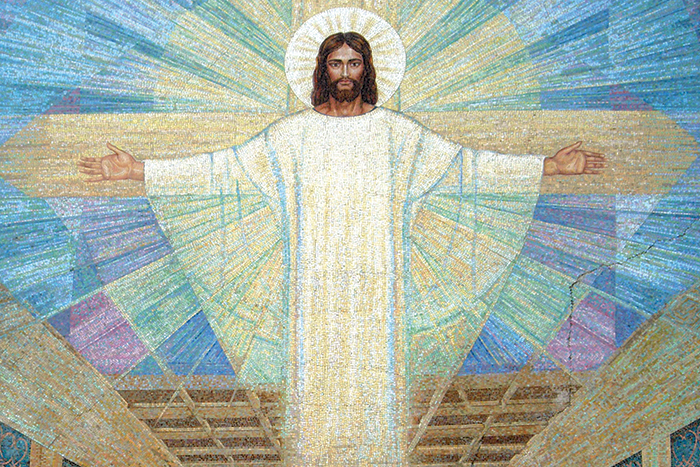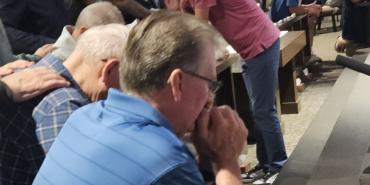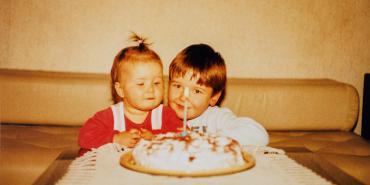Resurrection and Communion

Early in my pastoral ministry, one of the charter members of the congregation I was serving died unexpectedly just a few months after my arrival. He had served that church faithfully for nearly 30 years as treasurer, and in his memory, his family purchased new offering plates inscribed with his name and the words, “In memory of a faithful servant.”
Shortly afterward, I came into the sanctuary on a Sunday night and saw his sister gazing intently at the communion table, on top of which sat the offering plates. She leaned over to her husband and said, “’In remembrance of me.’ I know the offering plates were given in my brother’s memory, but I’m trying to remember in whose memory that table was given.”
Thankfully, in due time, she learned in whose memory the communion table was given! But for all of us, there is another pressing question.
Beyond an acknowledgment that communion is shared in memory of Jesus, what, specifically, are we remembering?
Communion Memories
For many of us, our communion memories are tied to Maundy Thursday and Good Friday – a somber remembrance of the Last Supper, and a mournful reminder of Christ’s sacrificial death on the cross. The very language of the service can steer our focus in that direction as we are reminded of Christ’s body which was broken for us and His blood which was shed for us.
In some of our communion services, there is a noticeably somber tone: the warnings against eating or drinking “unworthily,” as well as the moments of reflection we experience as we wait in silence until everyone has received their small cup and smaller portion of bread. We remember that Christ was betrayed by one of His circle of twelve who shared the Last Supper with Him. We remember that the earth convulsed and darkness covered the land as Christ hung upon the cross.
The memories of those events, however, are transformed by the Resurrection.
It is in light of the resurrection that we can call that dark Friday “Good,” and in the light of the resurrection, our communion services find their full meaning. Yes, there is a direct connection in communion to the Last Supper and to Calvary, but we likely would not continue to repeat the ceremony if it were not for the resurrection that we celebrate on Easter.
Communion and Resurrection
As Nazarenes, we have not always focused on the link between Communion and Easter as much as we should, but gradual steps have been taken to encourage us to make those connections. Our Manual no longer says that “only unleavened bread” should be used in communion. Unleavened bread makes connections to the Jewish Passover feast and adds a somber tone (and taste) to the meal.
Leavened bread, however, makes connections to the Easter evening meal that Christ had with the two dejected followers He encountered walking on the road to Emmaus (Luke 24). It was at this meal that the risen Christ was “made known to them” in the breaking of the bread (Luke 24:35). Leavened bread also draws connections to the great Heavenly banquet we anticipate, where surely simple wafers will not be served!
Further, new language was approved for our communion ritual at the General Assembly in 2017.1 Whereas the former ritual read, “Let us remember that it is the memorial of the death and passion of our Lord; also a token of His coming again,”2 the current ritual reads, “The Communion Supper, instituted by our Lord and Savior Jesus Christ is a sacrament, which proclaims His life, His sufferings, His sacrificial death, and resurrection, and the hope of His coming again.”3
There are seasons of the Church year, such as Lent, in which our tone in approaching the Lord’s table reflects the solemnity of Ash Wednesday or Maundy Thursday. On those days, focusing on the solemnity of the Last Supper and Calvary is appropriate. But not on Easter! On Easter Sunday, we gather not to observe the Lord’s Supper but to celebrate communion in the sacrament which proclaims Christ’s resurrection. Christ has died, Christ is risen, and Christ will come again!
Jim Fitzgerald is chair of the School of Theology and Ministry at Southern Nazarene University.
1. Pending approval by districts worldwide. Manual, 2017-2021. (Kansas City, MO: Nazarene Publishing House, 2017), 260 (par. 700).
2. Manual, 2013-2017. (Kansas City, MO: Nazarene Publishing House, 2013), 260 (par. 802).
3. Manual, 2017-2021, 260, (par. 700) emphasis added.
Holiness Today, March/April 2018
Please note: This article was originally published in 2018. All facts, figures, and titles were accurate to the best of our knowledge at that time but may have since changed.




